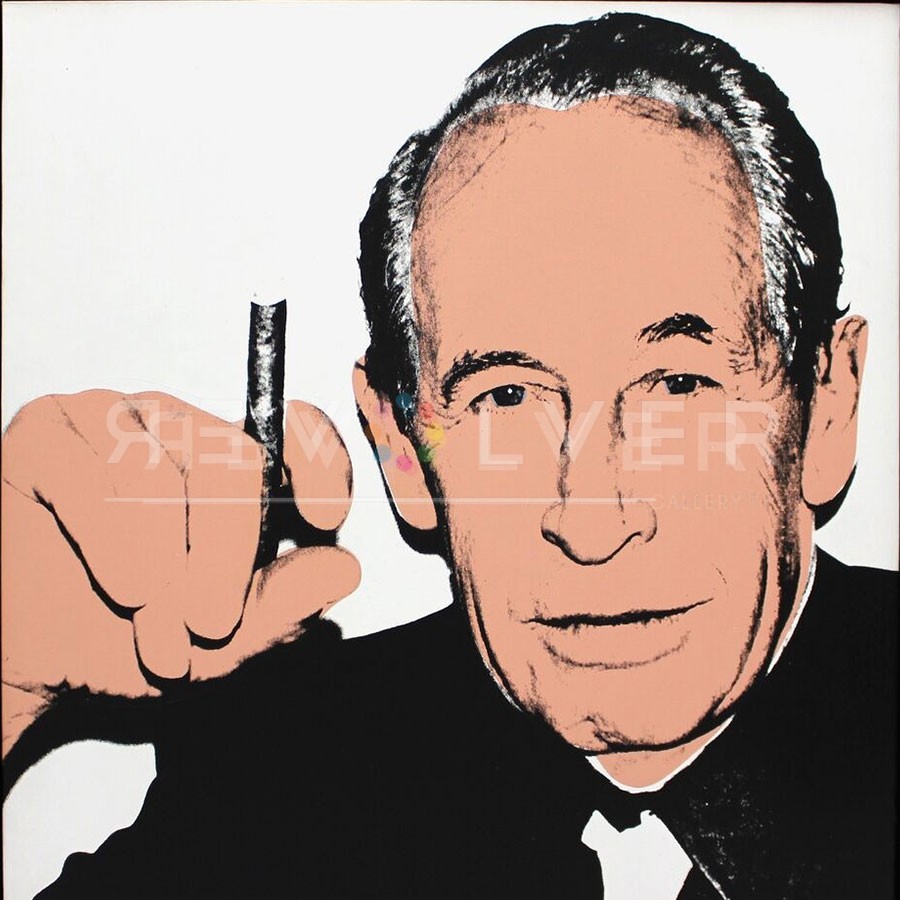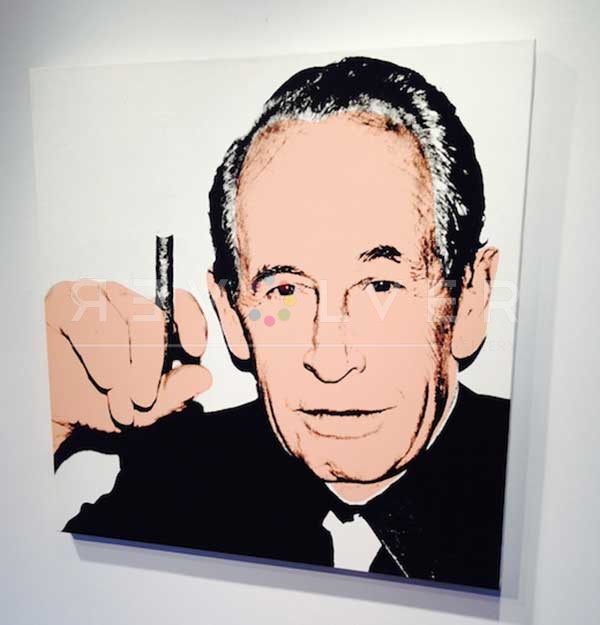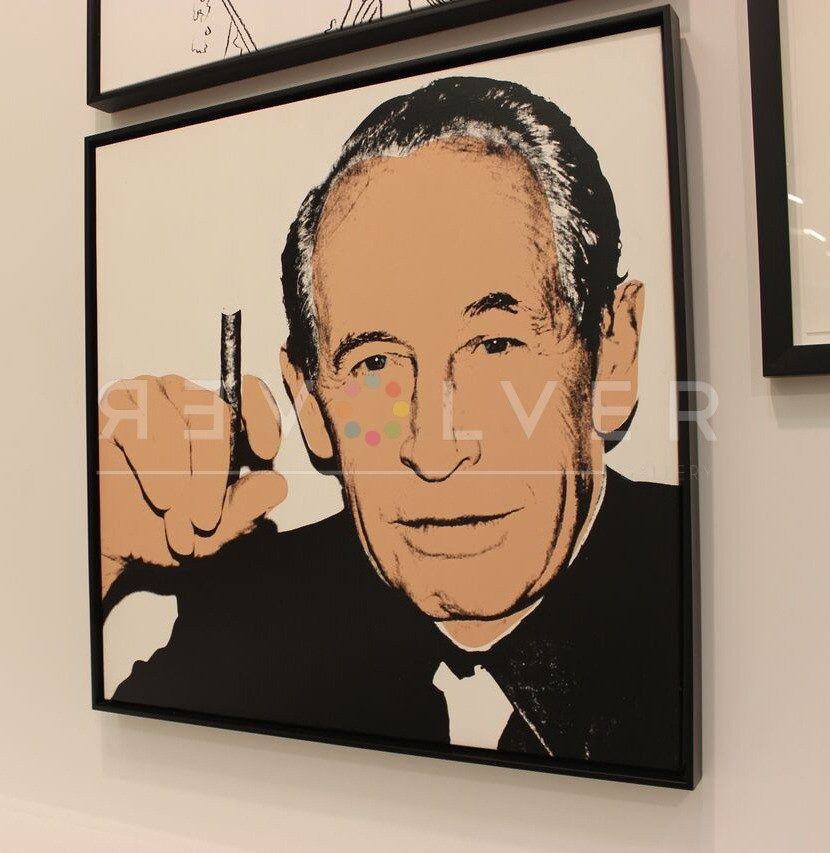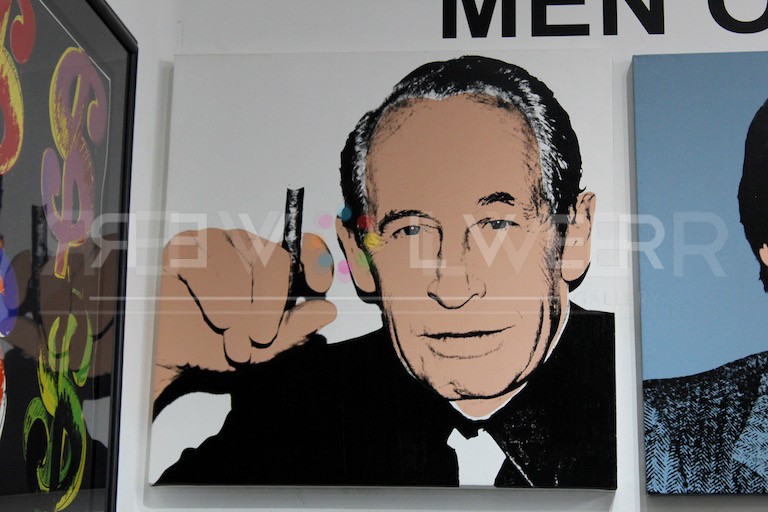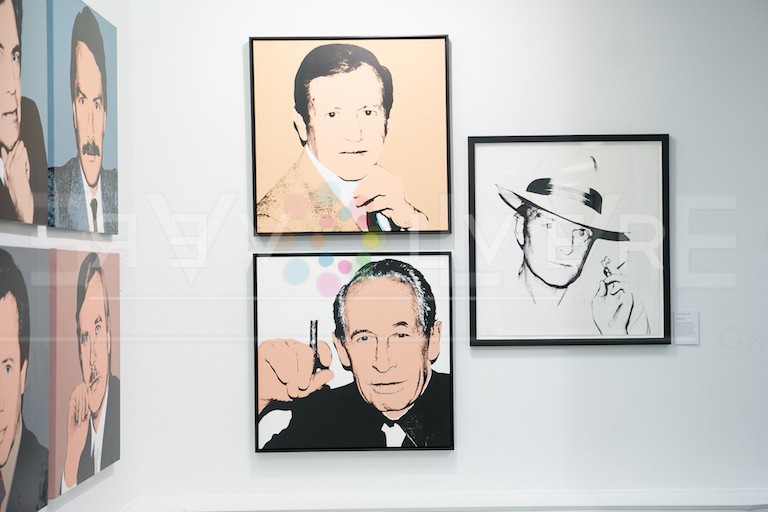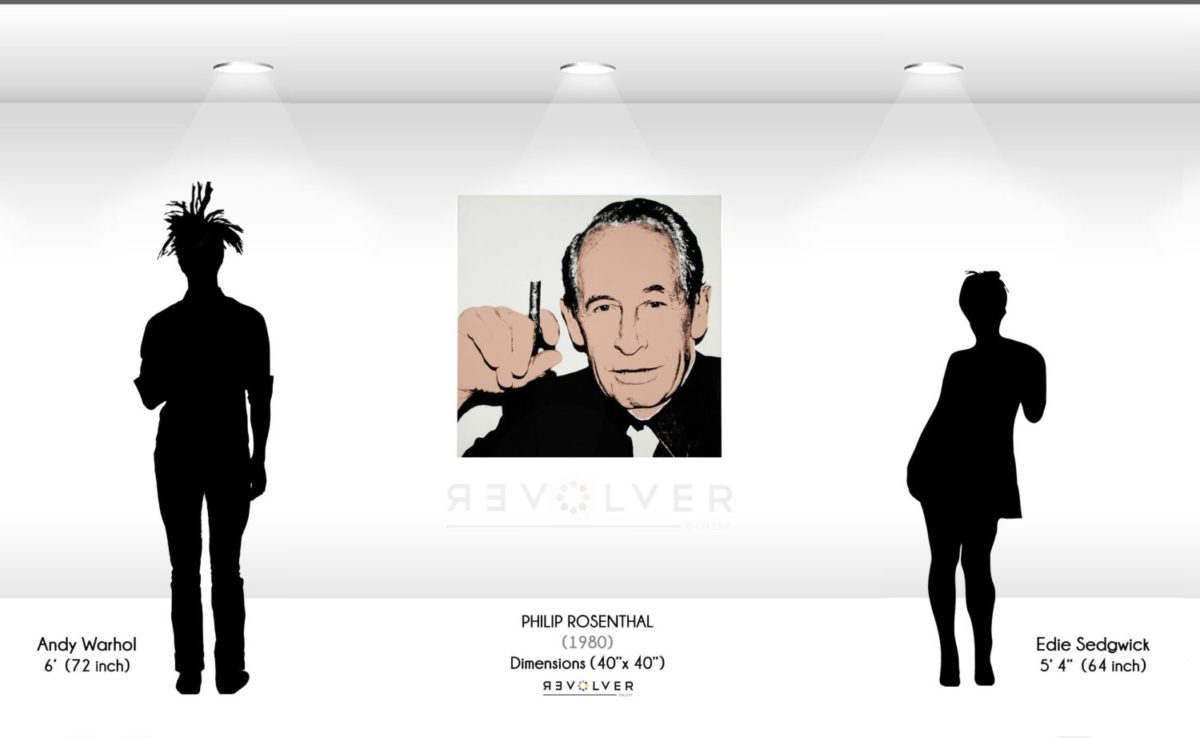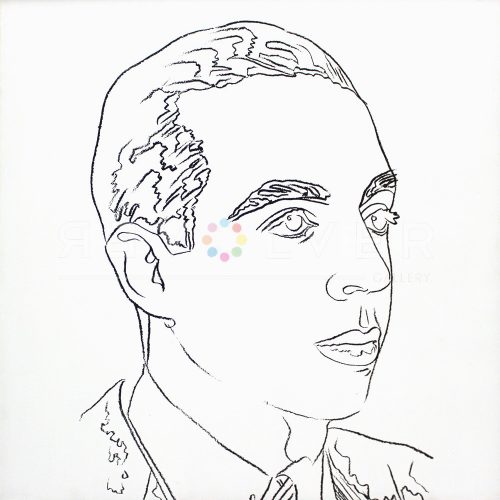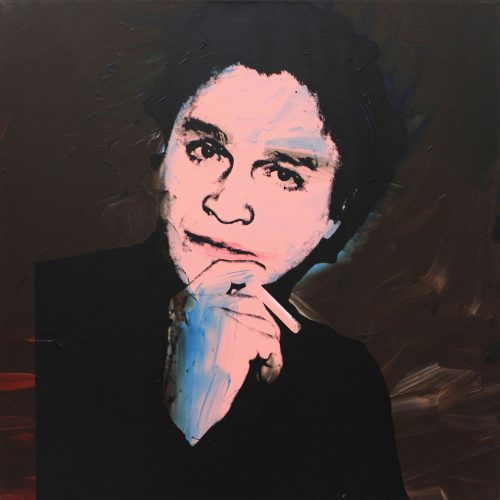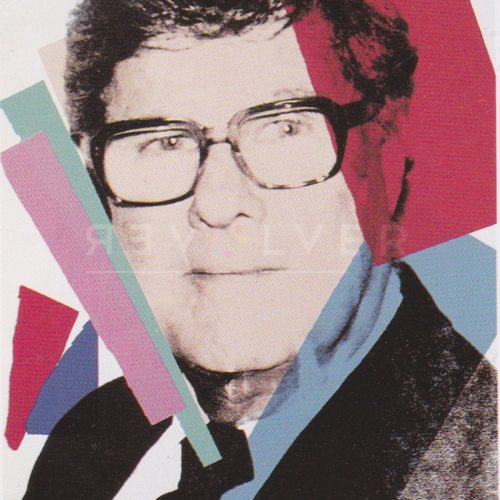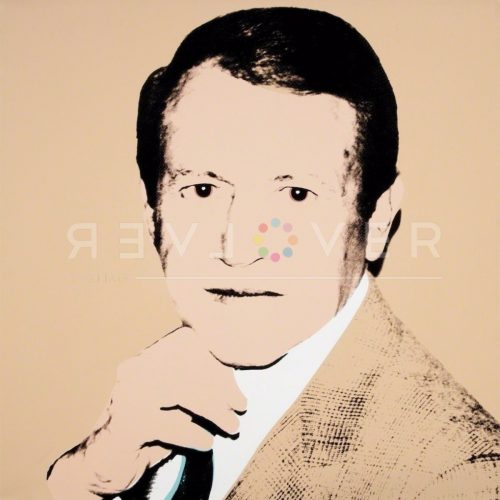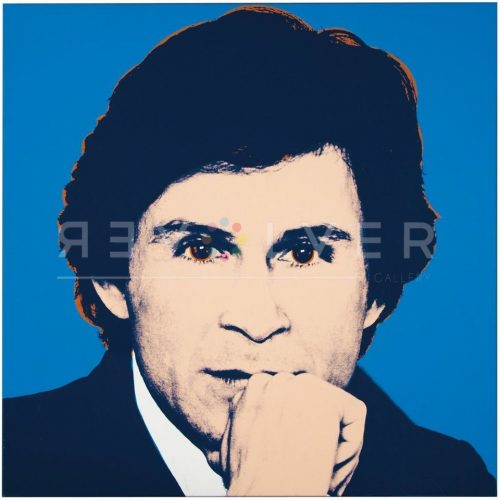Andy Warhol’s 1980 Portrait of Philip Rosenthal is a masterful synthesis of the artist’s iconic style and Rosenthal’s commanding presence. This unique painting emerged from Warhol’s visit to the Rosenthal Factory in Selb, Germany.
Philip Rosenthal, dubbed Germany’s “Emperor of China,” was a visionary in the world of design. As the vice-chairman of Rosenthal AG, a renowned porcelain company, he was instrumental in steering the company’s design ethos. His upbringing, under the influence of a family deeply rooted in porcelain manufacturing, instilled in him a keen eye for detail and design. By 1950, his leadership and design sensibilities were evident as he took on the role of vice-chairman and director of design for the family business.
In 1961, Rosenthal made a groundbreaking move with the creation of the “Rosenthal studio-line” brand. Long before design became a global trend, Rosenthal collaborated with contemporary artists, designers, and architects. Among these were luminaries such as Raymond Loewy, Walter Gropius, Tapio Wirkkala, Sebastian Herkner, and of course, Andy Warhol. To date, over 150 artists have crafted unique collections for Rosenthal. The brand’s innovative spirit has been recognized with about 500 design prizes and features in internationally renowned museums and galleries, underscoring Rosenthal’s leadership in design innovation.
Outside the confines of the company, Rosenthal acted as a political advocate, championing social justice and employee rights. His role in the Social Democratic Party and as Germany’s Parliamentary Secretary of State highlighted his commitment to societal progress. Yet, for all his achievements, Rosenthal is remembered as a man of many quirks. Known for his eccentric lifestyle, he traveled Europe with his family in a Volkswagen Bus, embarking on segmented, circular tours of the continent. His residence, the 18th-century Erkersreuth Castle, reflected his unique tastes, with a bedroom that resembled a tented sanctuary.
Warhol’s visit to the Rosenthal Factory, facilitated by gallery owner Hans Mayer and manager Fred Hughes, constituted more than just a casual trip. It became an exploration into the world of a man who had made significant strides in the design industry. The Polaroid shots taken during this visit in Selb became the foundation for the portrait that Warhol crafted later in his iconic New York Factory Studio.
The portrait itself is a marvel of contrast and focus. Rosenthal’s features, depicted in stark black against a pristine white backdrop, exude an aura of authority and assurance. The effortless elegance of his black suit and white tie further accentuate this contrast. The flat sandalwood color applied to his face and hand, along with the cigar he holds—a signature accessory often seen with him—hint at his pleasure-seeking lifestyle. The gaze, intense and forward-looking, speaks of a man who has not only achieved success but has also shaped an industry with vision and candor.

